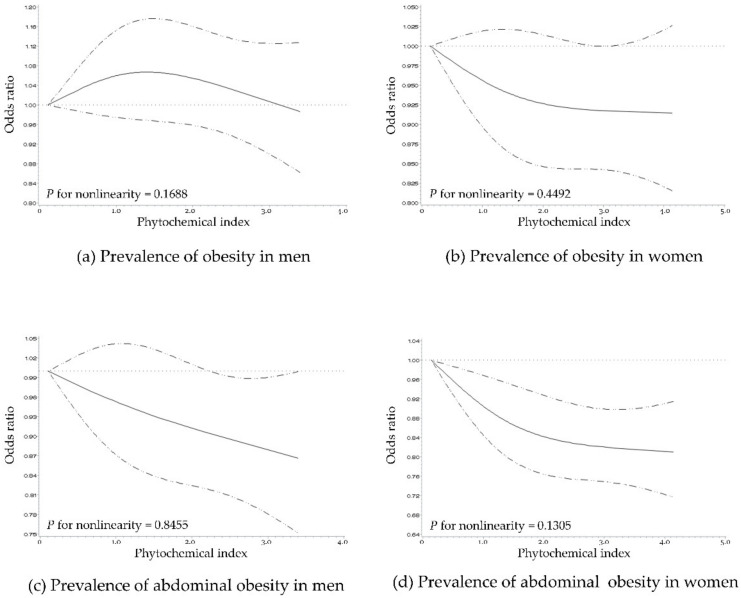Figure 1.
Multivariable adjusted odds ratios (95% confidence intervals) for the nonlinear relationship between phytochemical index and prevalence of obesity and abdominal obesity in Korean men and women. The prevalences of obesity in men (a) and women (b) and the prevalence of abdominal obesity in men (c) and women (d) were evaluated using restricted cubic splines. The model was adjusted for age (19–29, 30–39, 40–49, 50–59, and ≥60 years), education level (lower than high school education and high school educated or higher), household income (mid-low or lower and mid-high or higher), smoking status (active smokers and non-smokers), alcohol consumption (drinkers and non-drinkers), physical activity (low, mid, and high), total energy intake (continuous), and level of intake of meat and meat products (continuous), sweets (continuous), and dairy products (continuous). Obesity was defined as having a body mass index ≥25 kg/m2 according to the World Health Organization criteria for Asian populations. Abdominal obesity was defined as having a waist circumference ≥90 cm and ≥85 cm for men and women, respectively, according to the Korean Society for the Study of Obesity criteria.

